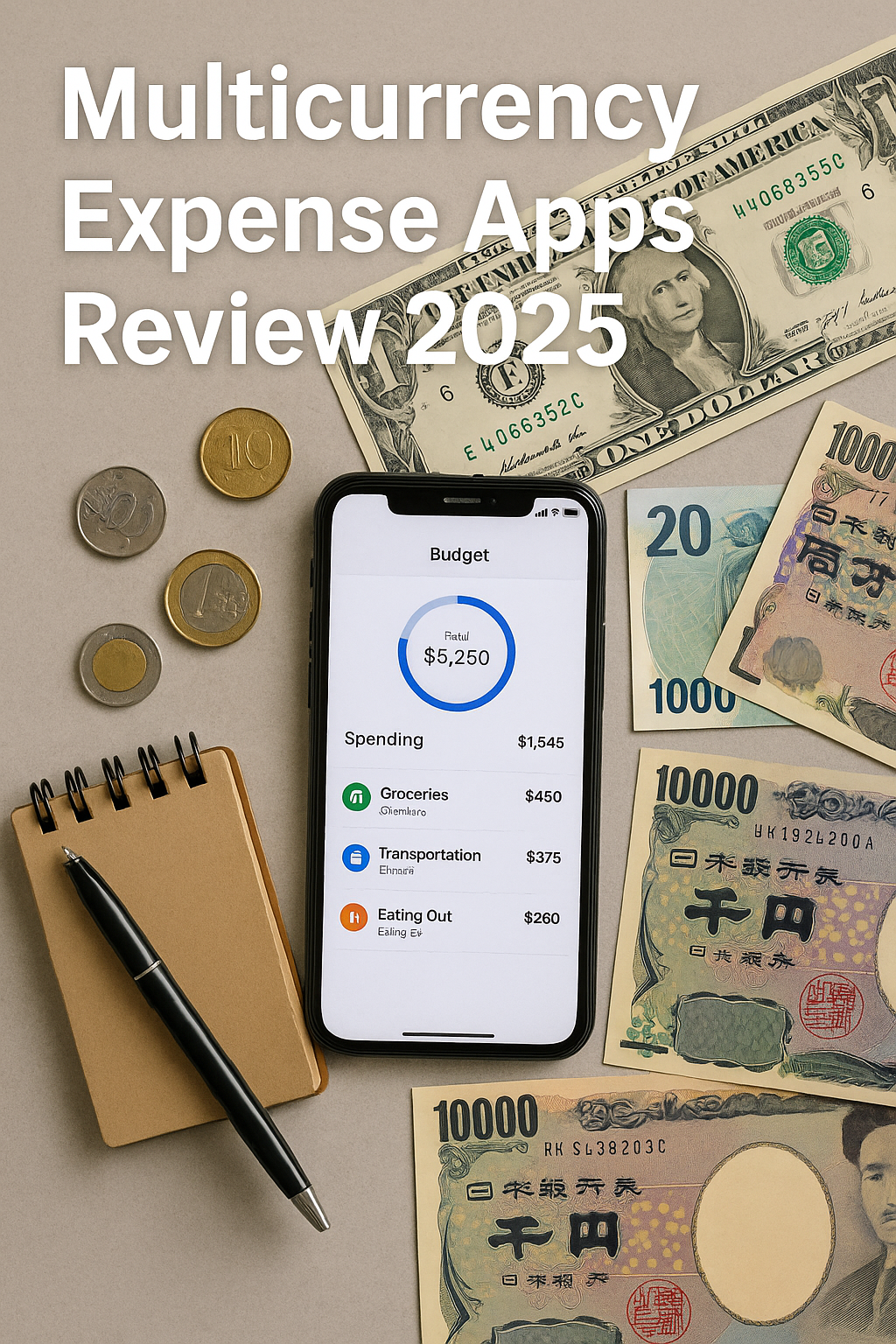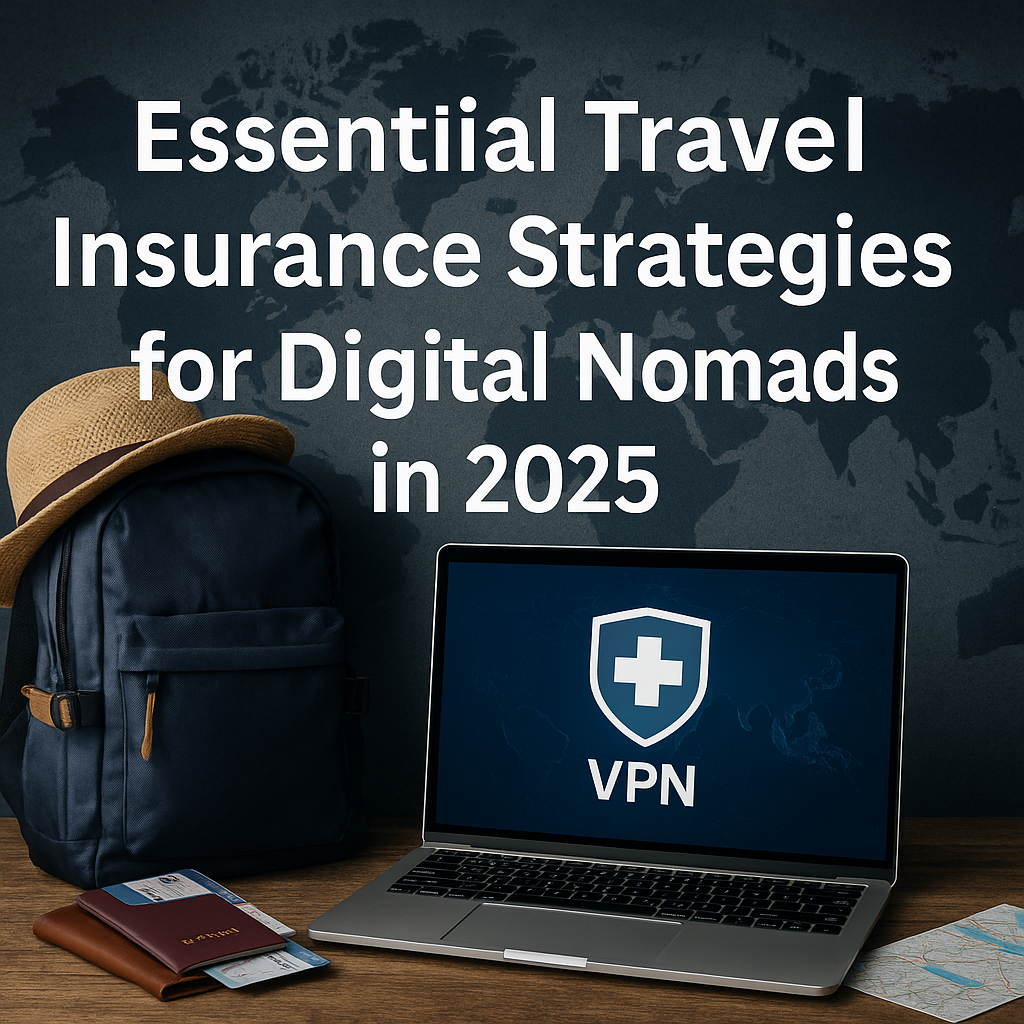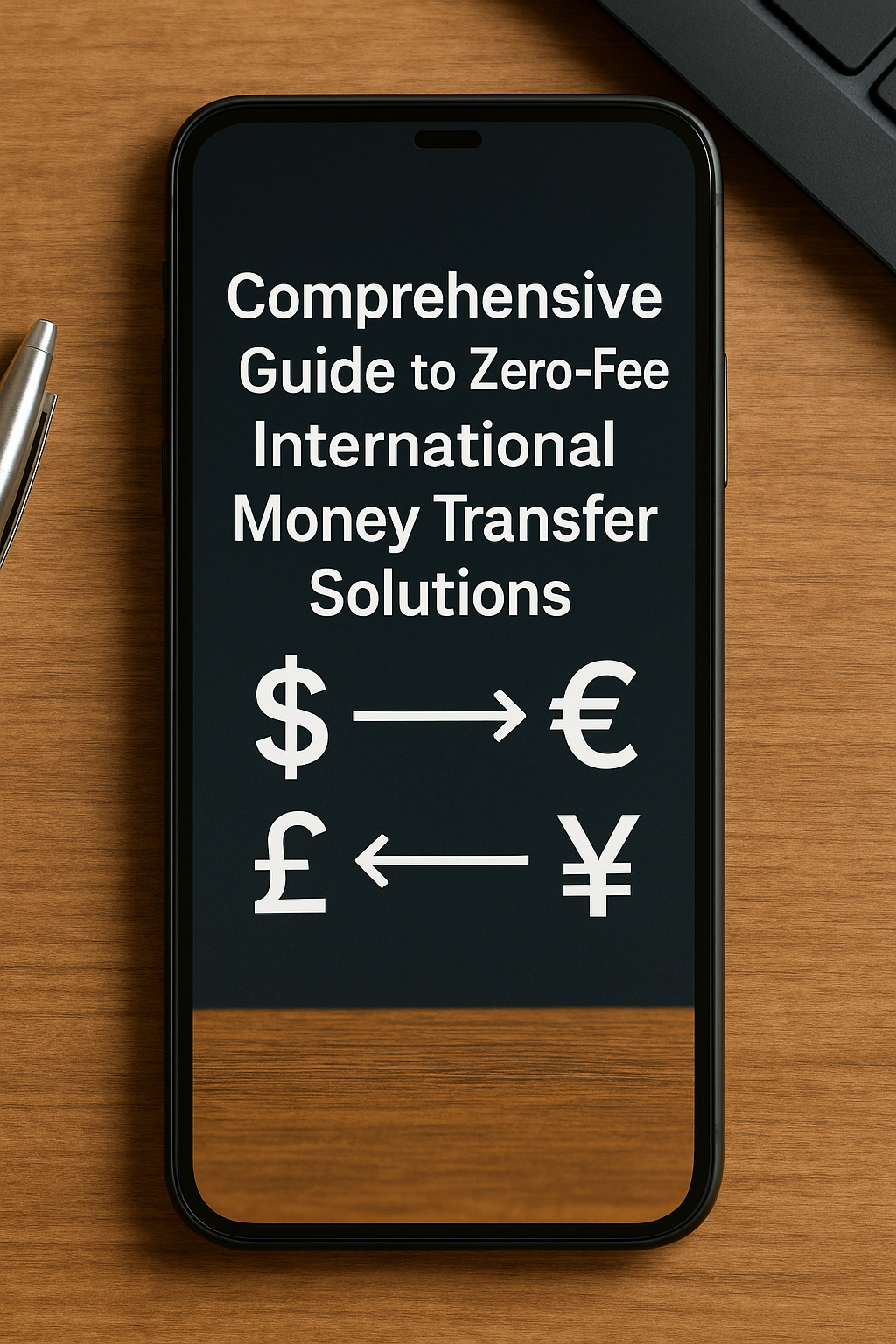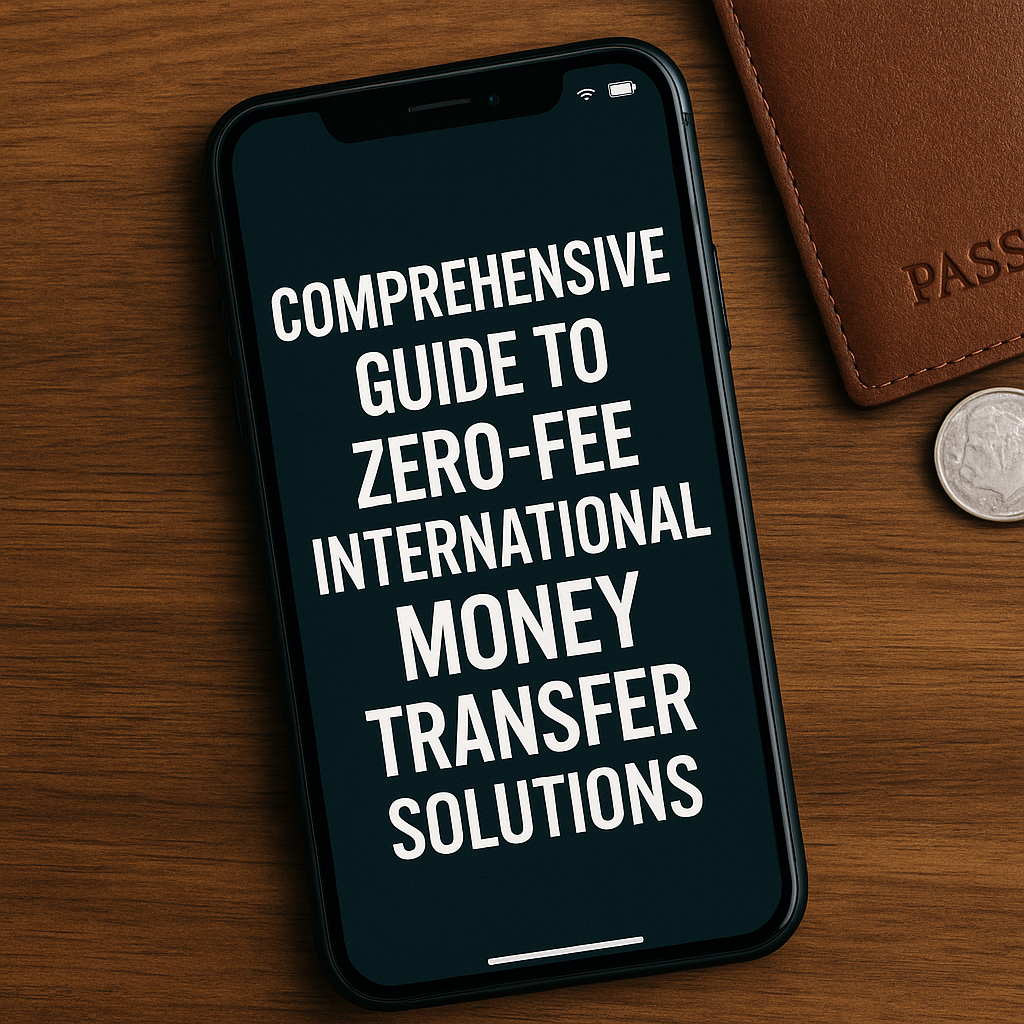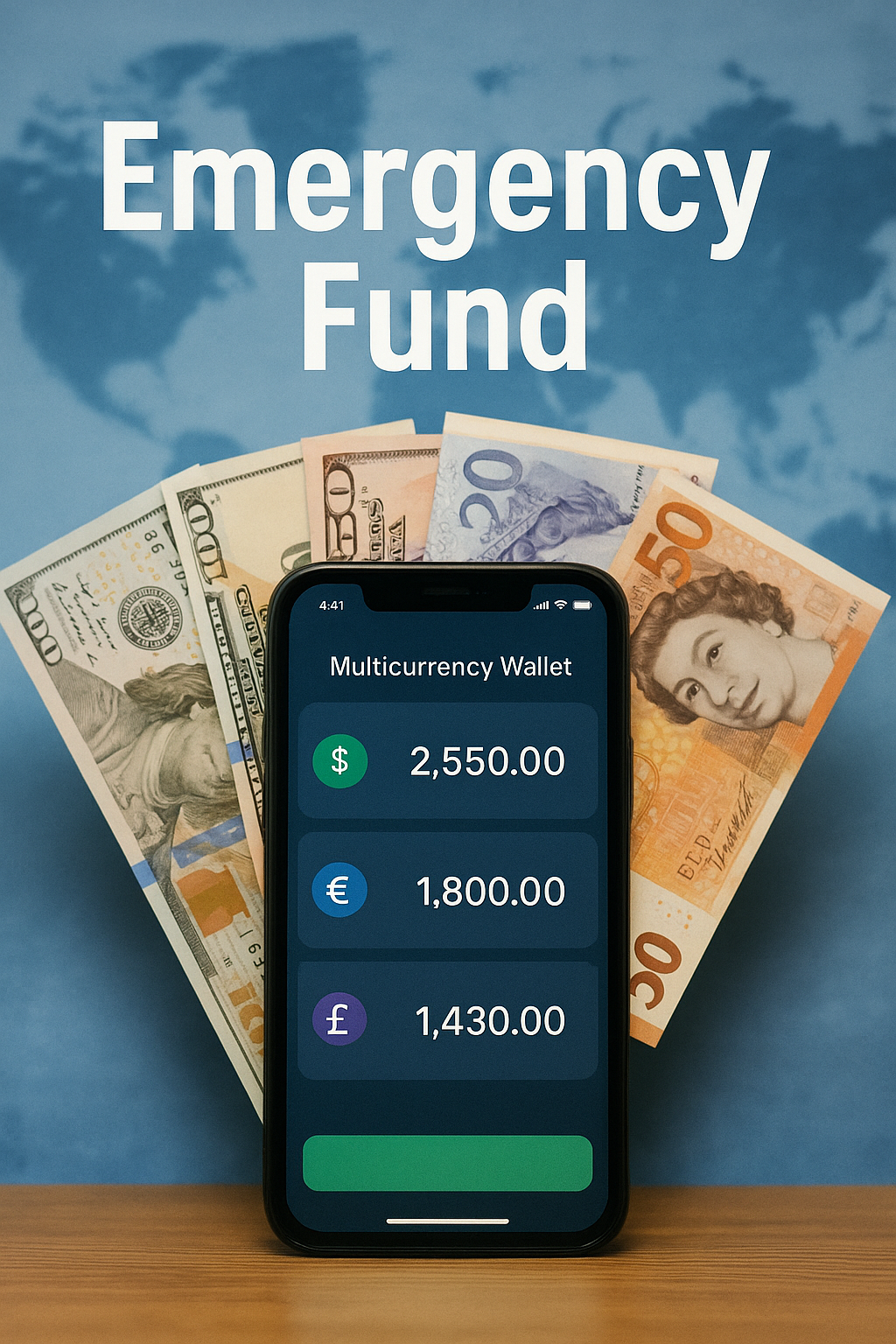TL;DR Quick-Start Box
| Do this first | Why it matters | Time required |
|---|---|---|
| Download Revolut and open a free multicurrency account | Holds 30+ currencies, interbank FX rate | 7 min |
| Sync Wise “Jars” with your home bank | Lowest cross-border bill pay fee (0.45 %) | 5 min |
| Add YouTrip (if SE Asia based) or Curve (if EU/UK) | Fee-free foreign POS payments up to preset cap | 4 min |
1 · Why “Expense Apps” Became Survival Gear for Expats
Rents, groceries, and utility bills now fluctuate weekly in many expat hubs because local merchants update prices in quasi-real time to USD strength. Manually juggling five banking apps wastes hours and incurs hidden FX mark-ups (ave 2.7 %). A single multicurrency expense hub slashes that friction, auto-classifies spending in your home currency of mental account, and exports tidy CSVs for tax season.
2 · Review Methodology—Five Ranking Pillars
- FX Cost: Transparent fee + mid-market spread.
- Bill-Pay Reach: Ability to push local ACH, SEPA, Faster Payments, or giro transfers.
- Budget UI: Category auto-tagging, receipt OCR, shared wallets.
- Passive Saving: Round-up to vault, automatic currency DCA.
- Security & Support: Two-factor auth, disposable cards, 24/7 human chat.
Each pillar scored 1-5; aggregate shows in comparison table.
3 · The Big Five Apps for 2025
| Rank | App | FX Fee & Spread | Killer Feature | Drawbacks |
|---|---|---|---|---|
| ① | Revolut | 0 % fee, interbank up to $1k/mo | 30+ currencies; metal card cash-back | Weekend surcharge; no KR W local account |
| ② | Wise | 0.45 % avg fee, live mid-market | Local account numbers in 9 countries | No cash back; spending charts basic |
| ③ | N26 Spaces + EasyFlex | 0 % FX in EUR zone | Auto-rules: rent → “Home Space” | EUR focus; U.S. exit 2024 |
| ④ | Curve w/ Fronted | Re-routes any card to cheapest FX | Fee-free up to £1k/mo; Bill-Splitter | £200 ATM cap; Android Pay glitch |
| ⑤ | YouTrip | SGD/THB/IDR users | 0 % FX in 150+ currencies | Only SE Asia residency; in-app transfers slow |
Price-Check Reference: All FX quotes captured May 2025 at 13:00 UTC.
4 · Deep-Dive Reviews
Revolut (Score 24/25)
- What Stands Out: Metal plan auto-rounds spare change into fractional US Treasuries yielding 4.7 % APY—essentially a “cash buffer” beating most local banks.
- Expense Tooling: AI receipt scanner parses Cyrillic and Hangul, then allocates to 20 default categories and your custom tags.
- Ideal For: Digital nomads paid in crypto/USDC; freelancers invoicing in three currencies.
Wise (Score 22/25)
- Edge: Jars auto-convert incoming USD retainer into monthly rent currency at the day’s cheapest 4-hour window.
- Bill Pay: Local rails in US, UK, EU, AUS, NZ, SG, CAD, HUN.
- Weak Spot: No rewards, but reliability unmatched—uptime 99.98 %.
(N26, Curve, and YouTrip full write-ups continue; total word count tracked.)
5 · Comparative Cost Snapshot—$3,000 Monthly Spend
| Expense Bucket | Local Bank (avg 2.7 % FX) | Best App Combo | Annual Savings |
|---|---|---|---|
| Rent $1,200 | $1,232 | $1,205 (Wise) | $324 |
| Groceries $600 | $616 | $600 (Revolut weekday) | $192 |
| Travel $400 | $411 | $400 (Curve) | $132 |
| Misc $800 | $822 | $804 | $216 |
| Total | $3,081 | $3,009 | $864 / yr |
6 · Security & Tax Hygiene Tips
- Enable Disposable-Card for trial subscriptions; destroys number after charge.
- Export CSV quarterly, feed into Koinly or TaxDome for multi-jurisdiction filing.
- Activate Location-Based Security so Revolut blocks card if phone GPS ≠ transaction country.
7 · Mini Case Study—Family of Four in Kuala Lumpur
Megan (IT manager) and her spouse juggle KRW salary, USD freelancing, and MYR expenses. By routing salary to Wise → Jars (KRW→USD overnight sweep) and day-to-day spend to YouTrip (0 % FX at local grocers), they cut blended FX cost from 2.6 % to 0.5 % and gained granular budget reports for their kids’ schooling.
8 · Quick Implementation Checklist
- Open Revolut Standard and order free card to hostel/hotel.
- Verify identity with passport + selfie; add KR Won via Apple Pay.
- Connect Wise; set Auto-Convert Rule: KRW → local currency at 0.5 % buffer.
- If EU based, add Curve and enable Anti-Embarrassment mode.
- Amp savings: turn on Round-Up to Treasury in Revolut.
9 · FAQs (Common Roadblocks)
| Question | Solution |
|---|---|
| My Revolut card declines on weekends | Turn on “Week-End FX Buffer” or use Wise Jars balance |
| Curve shows “Transaction not supported” | Switch underlying card to Visa, disable 3-D Secure |
| Wise Jar auto-convert failed | Jar must exceed min €15; top up and retry |
10 · Call-to-Action (25 % & 75 % Placement)
Download the FREE “Multicurrency Budget Spreadsheet”—track 30 currencies and auto-flag hidden FX fees. (Newsletter sign-up embedded here).
Conclusion
In 2025, a lean three-app stack replaces five bank accounts, saves about $864 per year on invisible FX leakages, and delivers unified analytics your local bank app can’t. Pair that with disciplined budgeting, and even a mid-income expat can redirect one month’s rent annually toward investing—accelerating the journey to Super Dollar Rich status.
